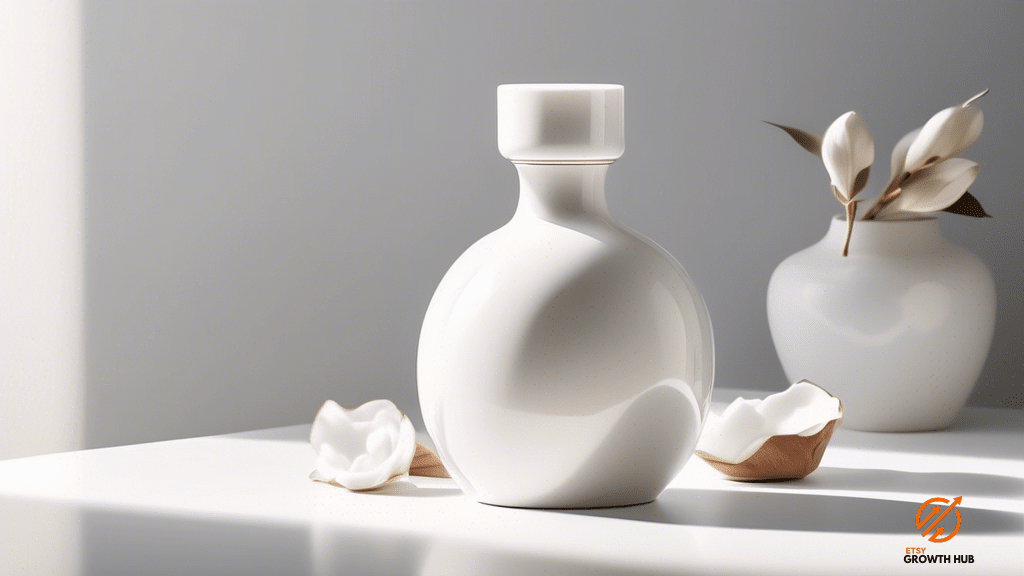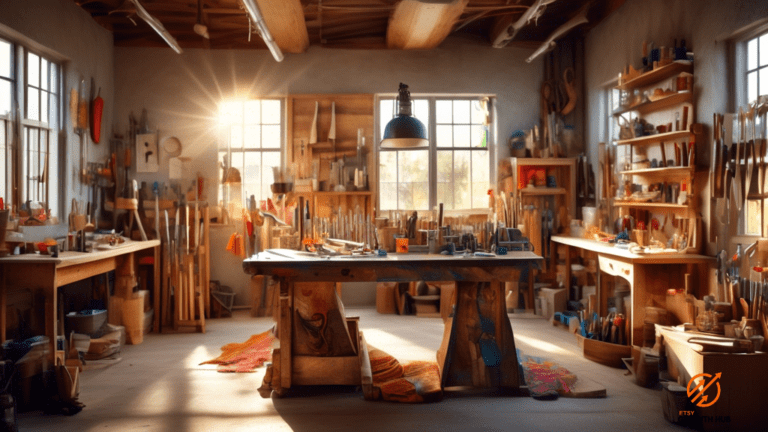Achieving Professional Results With White Background Product Photography
by Kevin Fairbanks · February 13, 2024
Learn how to achieve professional results with white background product photography. Expert tips and tricks to make your products shine. Click now for expert advice and take your photography skills to the next level!
Are you a budding photographer looking to capture stunning product images with a clean and professional look? If so, mastering white background product photography is an essential skill to have in your repertoire.
With the right lighting setup, a seamless white background, a well-chosen camera and lens, and expert product styling and composition, you can achieve professional results that will wow your clients and customers.
In this article, we will guide you through the process of achieving professional results with white background product photography. We will start by discussing the importance of choosing the right lighting setup to create a well-lit and evenly exposed image.
Then, we will delve into the intricacies of setting up a seamless white background, ensuring that there are no distractions and the focus remains solely on the product.
Next, we will guide you in selecting the perfect camera and lens combination to capture the intricate details and textures of the product.
Finally, we will explore the art of product styling and composition, as well as post-processing techniques to give your images that polished and professional look.
So, get ready to take your product photography skills to the next level and produce stunning images with a white background that will leave a lasting impression.
Key Takeaways
- Mastering white background product photography is important for achieving professional results.
- Setting up a three-point lighting setup with a key light, fill light, and backlight is essential for well-lit and evenly exposed images.
- Attention should be given to the selection of the camera and lens, considering factors such as resolution, lens aperture, and image stabilization.
- Product styling and composition play a significant role in creating visually appealing and balanced images, including the use of props and attention to lighting and key features.
Choosing the Right Lighting Setup
Now that you understand the importance of lighting in product photography, it’s time to choose the right lighting setup that will make your product images shine like a diamond in the rough.
The key to achieving professional results with a white background is to have a well-lit subject that is evenly illuminated from all angles. One popular lighting setup for this type of photography is the three-point lighting setup. This setup consists of a key light, a fill light, and a backlight.
The key light is the main light source that illuminates the subject and creates the overall lighting effect. It’s usually placed at a 45-degree angle to the subject and slightly above eye level.
The fill light is used to soften the shadows created by the key light. It’s placed on the opposite side of the key light, at a lower intensity.
Lastly, the backlight is placed behind the subject to separate it from the background and give it a three-dimensional effect. This light is usually positioned higher than the subject and angled towards it.
By using this three-point lighting setup, you can ensure that your product is well-lit and stands out against the white background. Experiment with different angles and intensities of light to achieve the desired effect.
Remember, the key to achieving professional results is to have a well-balanced and evenly lit subject, so don’t be afraid to play around with your lighting setup until you get it just right.
Setting Up a Seamless White Background
To set up a seamless white background, start by positioning your product in front of a clean and well-lit area. Here’s how you can achieve professional results:
- Use a clean, solid white backdrop: Choose a seamless paper or fabric backdrop to ensure a smooth and uniform background. Avoid using textured or patterned materials as they can distract from the product.
- Light the background separately: Place one or two lights behind the backdrop to evenly illuminate it. This will help eliminate any shadows or uneven lighting on the background, creating a seamless white look.
- Control your product’s distance from the background: Position your product a few feet away from the backdrop to prevent any unwanted shadows or reflections. This will also help create a clean separation between the product and the background.
By following these steps, you can achieve a seamless white background for your product photography, giving your images a professional and polished look.
Selecting the Perfect Camera and Lens
When selecting the perfect camera and lens, you’ll want to consider the resolution of the camera sensor, which captures minute details and brings your product to life in vivid clarity. The higher the resolution, the more fine details your camera will be able to capture, resulting in sharper and more professional-looking images.
Look for a camera with at least 20 megapixels or higher for the best results.
In addition to resolution, you’ll also want to consider the lens you use for your product photography. A good lens can make a significant difference in the overall quality of your images.
Look for a lens with a wide aperture, such as f/2.8 or lower, as this will allow you to achieve a shallow depth of field and create a nice bokeh effect, where the background is blurred and your product stands out.
A lens with image stabilization is also beneficial, as it helps reduce camera shake and ensures sharper images, especially when shooting in low light conditions.
By choosing the right camera and lens combination, you’ll be able to capture stunning product photos with a seamless white background.
Mastering Product Styling and Composition
Improve your product photography by mastering the art of styling and composition. The way you style and compose your product can greatly impact the overall look and feel of your photographs. Here are some tips to help you achieve professional results:
- Choose the right props: Select props that complement your product and enhance its features. Use props that are relevant to the product and create a cohesive theme. For example, if you’re photographing a coffee mug, consider adding coffee beans or a cozy blanket to create a warm and inviting atmosphere.
- Create balance and symmetry: Balance is key in product photography. Ensure that your composition is visually appealing by creating symmetry or using the rule of thirds. Place your product off-center for a more dynamic composition, or create symmetry by placing identical props on both sides of the product.
- Pay attention to lighting: Lighting plays a crucial role in product photography. Use natural light whenever possible for a soft and flattering effect. If shooting indoors, experiment with different lighting setups, such as using a lightbox or diffuser to control the intensity and direction of light.
- Highlight key features: Showcase the unique features of your product by emphasizing them in your composition. Whether it’s a texture, pattern, or detail, make sure it’s the focal point of your photograph. Use angles and close-ups to capture the essence of your product.
- Tell a story: Create a narrative through your composition. Consider the context in which the product will be used and try to capture that in your photographs. For example, if you’re photographing a kitchen appliance, include ingredients or utensils to show how the product can be used in a real-life scenario.
By mastering the art of styling and composition, you can elevate your product photography and capture images that stand out. Take the time to experiment, be creative, and pay attention to the details, and you’ll be well on your way to achieving professional results.
Post-Processing Techniques for a Polished Look
Master the art of post-processing to give your product photographs a polished and refined appearance. Once you’ve captured your product images, it’s time to enhance them through post-processing techniques.
Start by importing your photos into editing software and adjust the exposure, contrast, and white balance to ensure accurate colors and optimal brightness. Use the healing brush or clone stamp tool to remove any imperfections or blemishes on the product. Additionally, you can use the dodge and burn tools to selectively lighten or darken certain areas, enhancing the overall composition and adding depth to your image.
Next, focus on creating a clean and seamless white background. Use the selection tool to isolate the product and remove any distractions or unwanted elements. Adjust the levels or curves to make the background pure white, ensuring a professional and consistent look across all your product images.
Pay attention to details such as shadows and reflections, as they can make or break the final result. Use the adjustment layers to fine-tune these elements, making sure they blend seamlessly with the overall composition.
Finally, sharpen the image to enhance the details and make the product stand out. By mastering these post-processing techniques, you can take your product photography to the next level and achieve professional results with a white background.
Frequently Asked Questions
How can I prevent unwanted reflections on the white background when photographing shiny or reflective products?
To prevent unwanted reflections on the white background when photographing shiny or reflective products, position your lighting setup carefully to minimize direct reflections. Use diffusers or bounce cards to control the light and avoid harsh reflections.
Are there any specific camera settings I should use to achieve a professional look in white background product photography?
To achieve a professional look in white background product photography, use a high aperture (around f/8 or higher) for increased depth of field, set a low ISO to reduce noise, and adjust the white balance to ensure accurate colors.
What are some creative ways to add depth and dimension to the product images on a white background?
To add depth and dimension to your product images on a white background, try using props or accessories that complement the product, experimenting with different angles and lighting techniques, and creating shadows or reflections to give the image a more dynamic and visually interesting look.
How do I effectively capture the fine details and textures of the products when shooting on a white background?
To effectively capture fine details and textures on a white background, get up close and personal with your product. Zoom in on the intricate patterns and textures, allowing viewers to appreciate the craftsmanship and feel an emotional connection to the product.
Are there any recommended props or accessories that can enhance the overall aesthetic of white background product photography?
To enhance the aesthetic of your white background product photography, consider using props like colored backdrops, reflective surfaces, or interesting textures. These elements can add depth and visual interest to your images.
Last Updated: January 22, 2024
Disclosure: We may receive affiliate compensation for some of the links in this article at no additional cost to you if you decide to purchase a product. You can read our affiliate disclosure in our privacy policy.
Kevin Fairbanks is your expert navigator in the world of Etsy business. With a passion for creativity and a deep understanding of the e-commerce landscape, Kevin brings a wealth of knowledge to aspiring and established Etsy sellers alike.
As a seasoned entrepreneur and successful owner of multiple Etsy shops, Kevin knows firsthand the challenges and triumphs of the Etsy marketplace. His journey is one of innovation, perseverance, and a keen eye for market trends, making him an invaluable guide for anyone looking to succeed on Etsy.
Kevin’s expertise extends beyond just shop management; he is adept in areas such as SEO optimization, effective marketing strategies, and financial planning for online businesses. His insights are grounded in real-world experience, offering practical and actionable advice.
Join Kevin as he shares his journey and expertise on Etsy Growth Hub. Whether you’re starting your first Etsy shop or looking to expand your existing business, Kevin’s guidance is designed to help you navigate the complexities of Etsy selling with confidence and creativity.
Stay tuned with Kevin’s latest strategies and tips on Etsy Growth Hub to transform your passion into a thriving online business. His dedication to empowering Etsy sellers is evident in every piece of advice he shares, helping you turn your Etsy dreams into reality.
Verified and Approved by:

Kevin Fairbanks
Head of SEO
Like This Article?
Share with your friends
Table of Contents
Latest Articles
Keep Reading
-
Essential Tools For Customer Engagement
Unlock the power of customer engagement with these essential tools. Learn how to boost sales and create meaningful connections. Click now to discover the must-have tools for customer engagement!
-
Special Pricing Strategies For Selling Unique Handmade Items
Boost your profits and stand out from the competition with special pricing strategies for unique handmade items. Discover the secret to selling one-of-a-kind creations and don’t miss out on maximizing your sales. Click here to learn more!
-
Optimizing SEO For Your Etsy Shop
Improve Your Etsy Shop’s Success with Expert SEO Tips! Boost visibility, drive sales, and maximize your online presence with these must-know Etsy SEO tips. Don’t miss out – click here to optimize your shop today!




